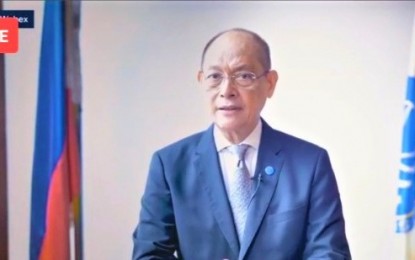
BSP Governor Benjamin Diokno
MANILA – Only about 20 percent of Filipino senior citizens are covered by the mandatory pension from either the Government Service Insurance System (GSIS) and the Social Security System (SSS).
This leaves the larger number of about 7.6 million elders to date without the means to provide for all their needs, Bangko Sentral ng Pilipinas (BSP) Governor Benjamin Diokno said during the virtual launch of the digital Personal Equity and Retirement Account (PERA) Tuesday.
Diokno said GSIS pensioners receive a monthly average pension of PHP18,525, while the average pension from SSS amounts to around PHP5,123.
“Depending on the lifestyle you would like to have in your senior years, this pension may or may not be enough to meet all your needs,” he said.
Citing results of a recent study, which he did not identify, Diokno said Filipinos are not really that prepared for their retirement since they only set aside about 3.6 months’ worth of income for retirement, a far cry from the average of 2.9 years among Asians.
Also, Filipinos expect that savings that is equivalent to about 2.1 years’ worth of personal income are enough for their retirement, the lowest level in the region, with the average at 12 years.
Citing a report from the Philippine Statistics Authority (PSA), Diokno said the share of social security benefits like retirement and survivorship pension, sickness, disability, death, and other related allowances or benefits to the country’s annual output is “relatively low” at around 2 percent from 2012 to 2017.
He thus cited the need for a voluntary retirement savings plan like PERA to augment the pensioners’ funds.
PERA, which was established through Republic Act 9505 or the PERA Act of 2008, aims to promote capital market development and savings mobilization.
Eligible investors based in the country can invest up to PHP100,000 annually, while the limit for overseas Filipino workers (OFWs) is PHP200,000 annually.
This investment is entitled to a tax credit equivalent to 5 percent and the tax credit can be used against an investors’ income tax liabilities or for OFWs, their national internal revenue tax liability.
Diokno said since the institution of PERA in December 2016, it only attracted 1,586 Filipinos, who have placed total contributions amounting to PHP137 million.
He said 1,099 or 69 percent of these investors are locally employed, 273 or 17 percent are OFWs, and 214 or 14 percent are self-employed.
He added OFWs have higher average contributions at PHP110,000; followed by locally-employed, PHP82,000; and self-employed, PHP76,000.
“These figures remain regrettably low,” Diokno said.
To further promote PERA and for it to benefit more Filipinos, BSP has teamed up with other regulatory agencies and market participants to make this available not only through the traditional transaction process but also the digital mode since movement restrictions remain in place vis-à-vis the pandemic.
Investors can also send PERA contributions through InstaPay and other digital means.
Diokno said they target to have about 5 million Filipinos investing in PERA within five years.
“The target seems ambitious. But with more than 40 million locally employed Filipinos prior to the pandemic and around 2.2 million overseas Filipino workers, I am optimistic that this goal is easily attainable,” he added.
Diokno said that although many Filipinos lost their jobs because of the pandemic “we nevertheless expect the Philippine economy to bounce back and create more job opportunities for displaced workers.”
During the same event, Finance Secretary Carlos Dominguez said the digitalization of PERA processes is a “major step towards the broadening of financial inclusion by enabling a convenient, safe, and seamless medium for both investment and retirement savings.”
He said the PERA Law was enacted in 2008 but taxation and regulatory issues hampered its implementation.
“The Duterte administration took on the challenge of resolving these issues for this powerful investment instrument to flourish and finally benefit the Filipino people. Not only did we resolve the issues, but we made this financial concept a working system that is easily accessible to the people,” he said.
Dominguez said PERA is not only for people nearing retirement but also for younger generations.
He said this investment will “also produce a new source of capital to power the nation’s growth while assuring the personal financial security of ordinary Filipinos.”
“It will help deepen the country’s local debt market, as it would convert savings into investable funds that can be tapped by Philippine companies,” he added.
Filipinos can avail of this investment through the branches or websites of the accredited market participants.
As of August 31, 2020, the BSP-accredited PERA market participants are the BDO Unibank, Inc., BPI Asset Management and Trust Corporation, ATRAM Trust Corporation, all of which are PERA administrators; Seedbox Technologies, Inc., digital platform provider; and Land Bank of the Philippines (Landbank), PERA Cash Custodian.
The PERA investment product providers are BDO, BPI Asset Management, and Trust Corporation, Landbank, Metropolitan Bank and Trust Company (Metrobank), and Rizal Commercial Banking Corporation (RCBC), all of which offer unit investment trust funds. (PNA)
